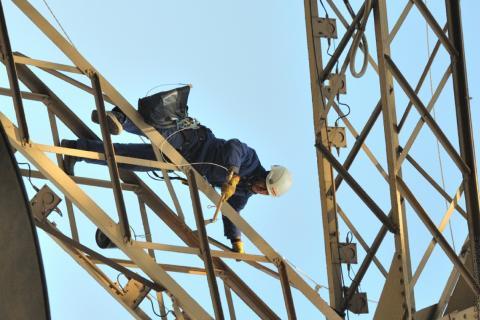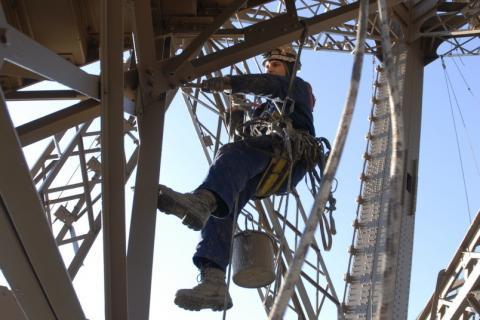Painting the Eiffel Tower
The repainting campaign is an important event in the life of the monument and takes on a truly mythical nature, as with everything linked to the Eiffel Tower. It represents the lasting quality of a work of art known all over the world, the colour of the monument that is symbolic of the Parisian cityscape, the technical prowess of painters unaffected by vertigo, and the importance of the methods implemented.
The Tower's protection
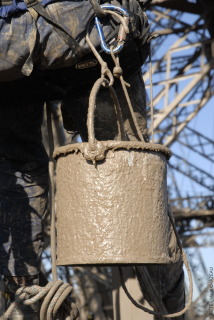 Constructed using puddle iron, the Tower is protected from oxidation by several coats of paint to ensure that it lives forever.
Constructed using puddle iron, the Tower is protected from oxidation by several coats of paint to ensure that it lives forever.
In 1900, in his book " The 300-Meter Tower ", Gustave Eiffel wrote, "We will most likely never realize the full importance of painting the Tower, that it is the essential element in the conservation of metal works and the more meticulous the paint job, the longer the Tower shall endure."
The Tower has been re-painted 19 times since its initial construction, an average of once every seven years. It has changed colour several times, passing from red-brown to yellow-ochre, then to chestnut brown and finally to the bronze of today, slightly shaded off towards the top to ensure that the colour is perceived to be the same all the way up as it stands against the Paris sky.
7
Years is the average repainting frequency
The Eiffel Tower gets a complete repaint every 7 years. This rhythm was recommended by Gustave Eiffel himself.
An enormous amount of work to ensure the Tower’s longevity
The Eiffel Tower is built using puddle iron, a material with a practically eternal lifespan if it is just regularly repainted! Indeed, there are various factors that can threaten this metal such as rust, the unavoidable pollution in a city, and bird droppings.
Traditional methods to paint the Tower
Painters strip, clean, apply rust-proofing and the final coat of paint to the whole 300 metres.
It should be mentioned that even today the painters still work using traditional methods dating back to Gustave Eiffel’s day – the painting of the Eiffel Tower is done mostly by hand!
Background of the Eiffel Tower's colours:
- 1887/88 : "Venetian red" paint, applied in the workshop before the parts were assembled.
- 1889 : Application of a very thick, reddish-brown coat.
- 1892 : The Tower turns "ochre brown".
- 1899 : A coat of 5 colours is painted in shaded tones from yellow-orange at the base to light yellow at the top. It was after this repainting campaign that the 7-year cycle was adopted for the renewal of the paintwork.
- 1907-1917-1924-1932-1939-1947 : The colour is called "yellow-brown". The 1917 repainting was delayed because of the war.
- 1954-61 : A new colour for the Eiffel Tower: "brownish-red".
- Since 1968 : The colour “Eiffel Tower Brown” is chosen for its harmony with the Parisian cityscape. It was applied in three shaded tones, with the darkest at the bottom and the lightest at the top.
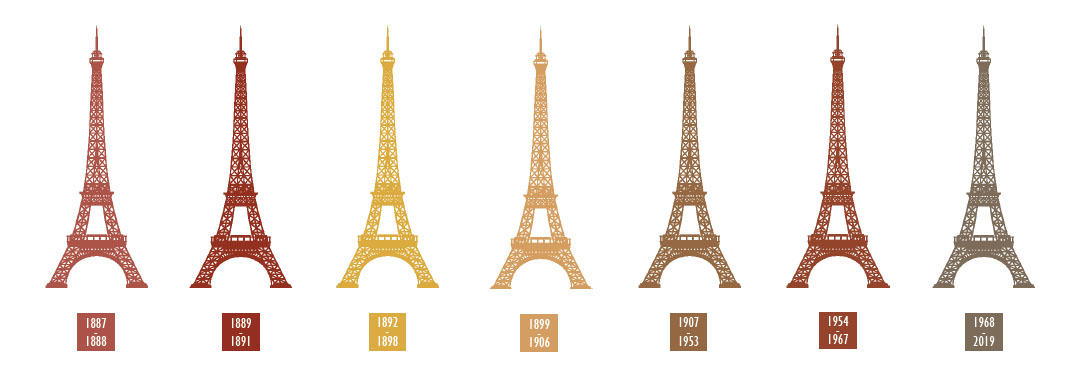
3
tones
Darker at the base and lighter towards the top to create a visual impression of uniformity.
A few figures
- About 50 painters – all of them specialists in work on metallic structures at great heights and on towers, and completely unaffected by vertigo;
- 60 tonnes of paint;
- the weight of eroded paint between two painting campaigns is estimated at 15 tonnes;
- 55 kilometres of safety line;
- 250,000 m² are repainted
A Guide to the Repainting Campaigns:
First things first: security equipment
Before the painters begin, specialists in work on tall buildings first fit safety nets and safety lines.
Safety Lines
Painters are equipped with harnesses to work on the Eiffel Tower's beams. Their security is ensured under the best possible conditions thanks to the systematic installation of safety lines (lignes de vie), which allow the workers to move around freely while staying attached to the structure at all times.
Safety nets
Safety nets are fitted to secure the work areas (against falling objects) and to catch any paint flakes. In 2009 they were equipped with an “anti-drip” system for the first time, using polymer film.
Tool safety
All of the tools used are attached to the painters’ belts or wrists, including paint pots and brushes.
The Painter’s Work: to form an assessment, to clean, to apply the paint
The extent and complexity of the work requires a rigorous methodology that includes a preparatory stage to search for the most corroded areas. These areas are then stripped, and a first coat of an anti-rust primer is applied, followed by a second application to strengthen the rust-proofing. Lastly, a final coat of paint is applied.
The course of Campaigns
Campaigns can lasts between 18 months and over 3 years, interruptions due to the weather considered:
- painting is impossible if the structure is too cold,
- the paint does not stick well if the structure is wet.
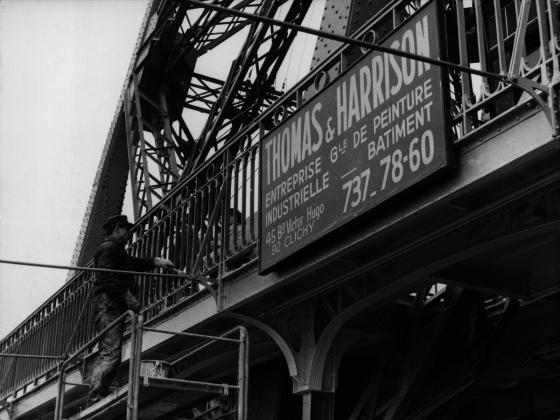
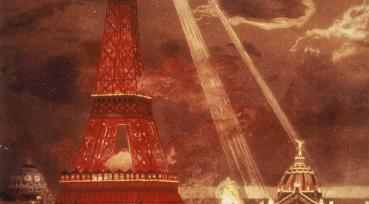
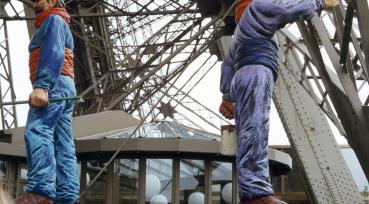
c794.jpg)
